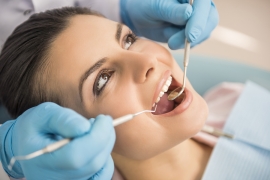THE BASIC ANATOMY OF A TOOTH
Understanding basic tooth anatomy may help you better describe the source of any dental pains or problems to your dentist. Most people don’t know all of the complex elements that make up each tooth, or the different types of teeth and their functions. If you’re suffering from a toothache near Belmont, read over this information on the anatomy of the tooth, and then visit a dentist near you for treatment.
Exterior Parts of a Tooth
The outermost layer of your tooth is called enamel. Enamel protects your tooth from damage and decay, and is the hardest tissue in the body. Enamel can become worn down or damaged by certain foods and beverages, or by improper oral hygiene. The top of your tooth is called the crown, and its shape dictates the tooth’s function. The crowns of your front teeth are chiseled, while those of your back teeth are flat.
Interior Parts of a Tooth
Dentin is the layer of tooth found underneath the enamel. It contains tubes that connect to your dental pulp. Dental pulp is located in the center of the tooth, and contains nerve tissue and blood vessels. The root of your tooth extends from the dental pulp, anchoring your tooth in place. The root makes up about 2/3 of the size of your tooth, and is embedded in your jaw bone.
Types of Teeth
Your incisors are your front teeth and are used for cutting food. You have four upper incisors and four lower incisors. Your canine teeth can also be called cuspids. These teeth are pointy and are also used for cutting or tearing food. You have two upper canines and two lower canines. Your premolars, also called bicuspids, have two pointed cusps that are used for tearing and crushing food. You have four upper premolars and four lower premolars. Your molars are located in the back of your mouth, and are flat with several cusps. They are used for chewing and grinding food. You have six upper molars and six lower molars.

